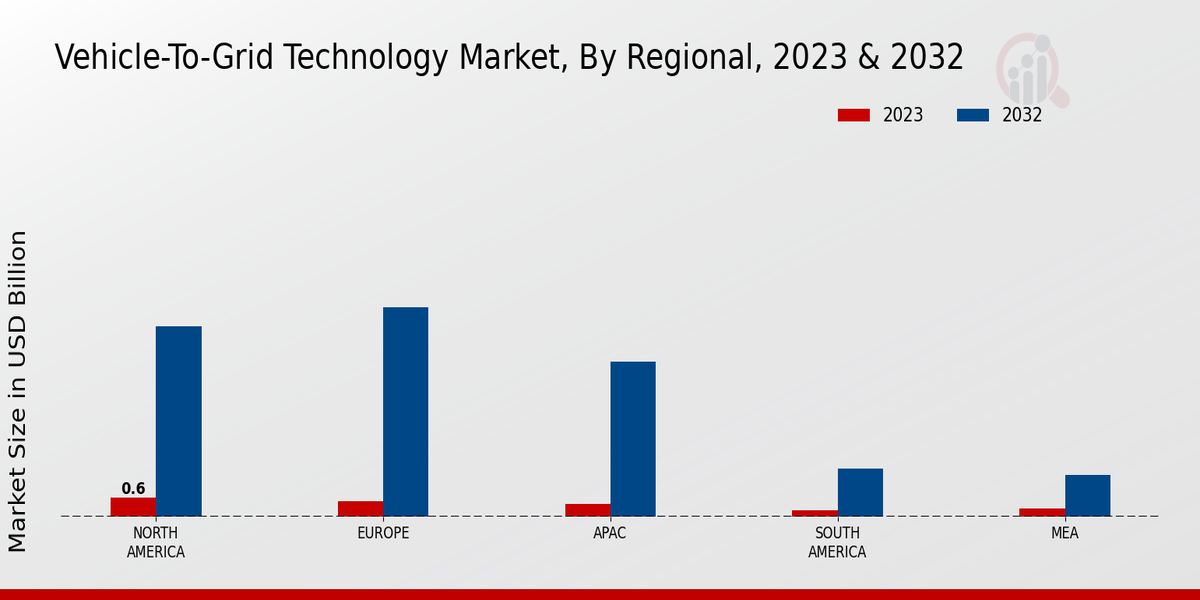Market Growth Projections
The Global Vehicle-to-grid Technology Market Industry is projected to experience substantial growth over the coming years. With an estimated market value of 2.54 USD Billion in 2024, it is expected to soar to 43.4 USD Billion by 2035. This remarkable growth trajectory indicates a compound annual growth rate (CAGR) of 29.43% from 2025 to 2035. Such projections reflect the increasing adoption of electric vehicles, advancements in battery technology, and supportive government policies. The market's expansion is indicative of a broader shift towards sustainable energy solutions and the integration of transportation with energy systems.
Government Incentives and Support
Government incentives and support play a crucial role in the Global Vehicle-to-grid Technology Market Industry. Many nations are introducing subsidies, tax breaks, and grants to encourage the adoption of electric vehicles and V2G technology. For instance, the United States has implemented various federal and state-level incentives aimed at promoting EV adoption, which indirectly supports V2G initiatives. This financial backing not only lowers the entry barriers for consumers but also stimulates investments in necessary infrastructure. As a result, the market is likely to witness accelerated growth, aligning with the broader goals of energy sustainability and grid resilience.
Increased Focus on Energy Security
The Global Vehicle-to-grid Technology Market Industry is increasingly influenced by the focus on energy security. As global energy demands rise, the need for reliable and resilient energy systems becomes paramount. V2G technology offers a solution by allowing EVs to act as distributed energy resources, providing backup power during peak demand or outages. Countries like Japan have recognized this potential, integrating V2G systems into their energy strategies post-disaster. This emphasis on energy security is expected to drive the adoption of V2G technology, further contributing to the market's growth trajectory.
Technological Advancements in Battery Storage
Technological advancements in battery storage are pivotal to the Global Vehicle-to-grid Technology Market Industry. Innovations in battery technology, such as solid-state batteries and enhanced lithium-ion batteries, are improving energy density and lifespan. These advancements not only increase the efficiency of EVs but also enhance their capability to participate in V2G systems. For example, Tesla's development of high-capacity batteries has set a benchmark in the industry, enabling vehicles to store and supply energy effectively. As these technologies evolve, they are likely to drive market growth, supporting the anticipated CAGR of 29.43% from 2025 to 2035.
Rising Demand for Renewable Energy Integration
The Global Vehicle-to-grid Technology Market Industry is experiencing a surge in demand for renewable energy integration. As governments worldwide implement policies to reduce carbon emissions, electric vehicles (EVs) are increasingly viewed as a solution to facilitate this transition. The ability of EVs to store and return energy to the grid enhances the stability of renewable energy sources, such as solar and wind. For instance, countries like Germany and Denmark are leading the charge, with substantial investments in V2G infrastructure. This trend is expected to propel the market, contributing to its projected growth from 2.54 USD Billion in 2024 to an estimated 43.4 USD Billion by 2035.
Consumer Awareness and Adoption of Electric Vehicles
Consumer awareness and adoption of electric vehicles are significantly impacting the Global Vehicle-to-grid Technology Market Industry. As more individuals recognize the environmental benefits and cost savings associated with EVs, the demand for V2G technology is likely to increase. Educational campaigns and marketing efforts by manufacturers and environmental organizations are enhancing public understanding of V2G systems. For instance, initiatives in the European Union have successfully raised awareness about the benefits of integrating EVs into the energy grid. This growing consumer interest is anticipated to bolster market growth, aligning with the overall trend towards sustainable transportation.


























Leave a Comment